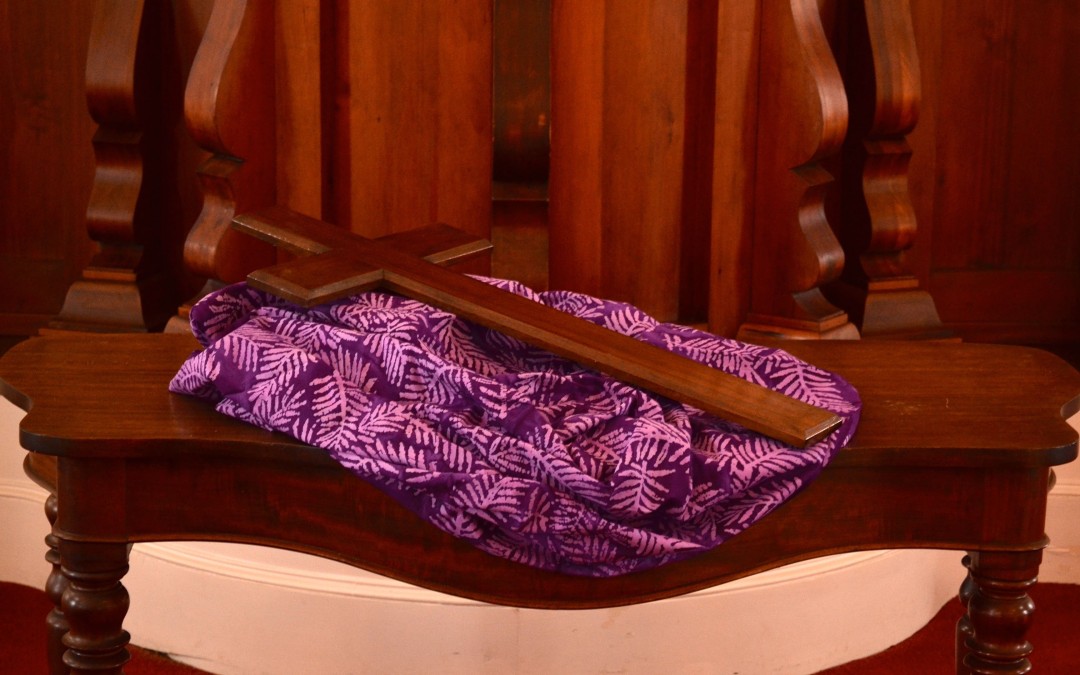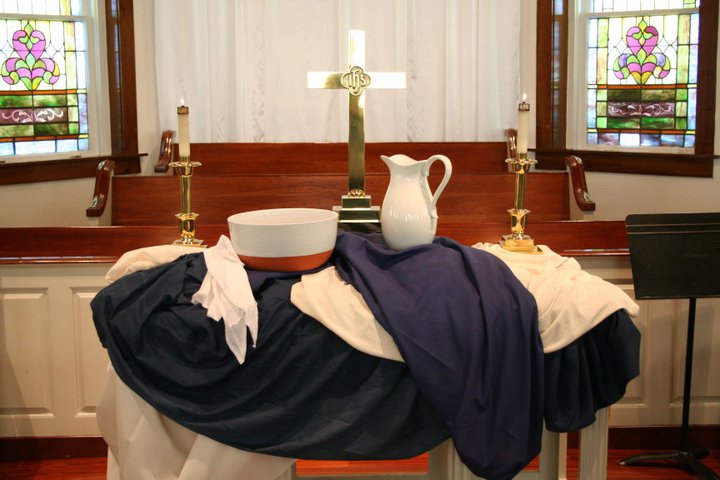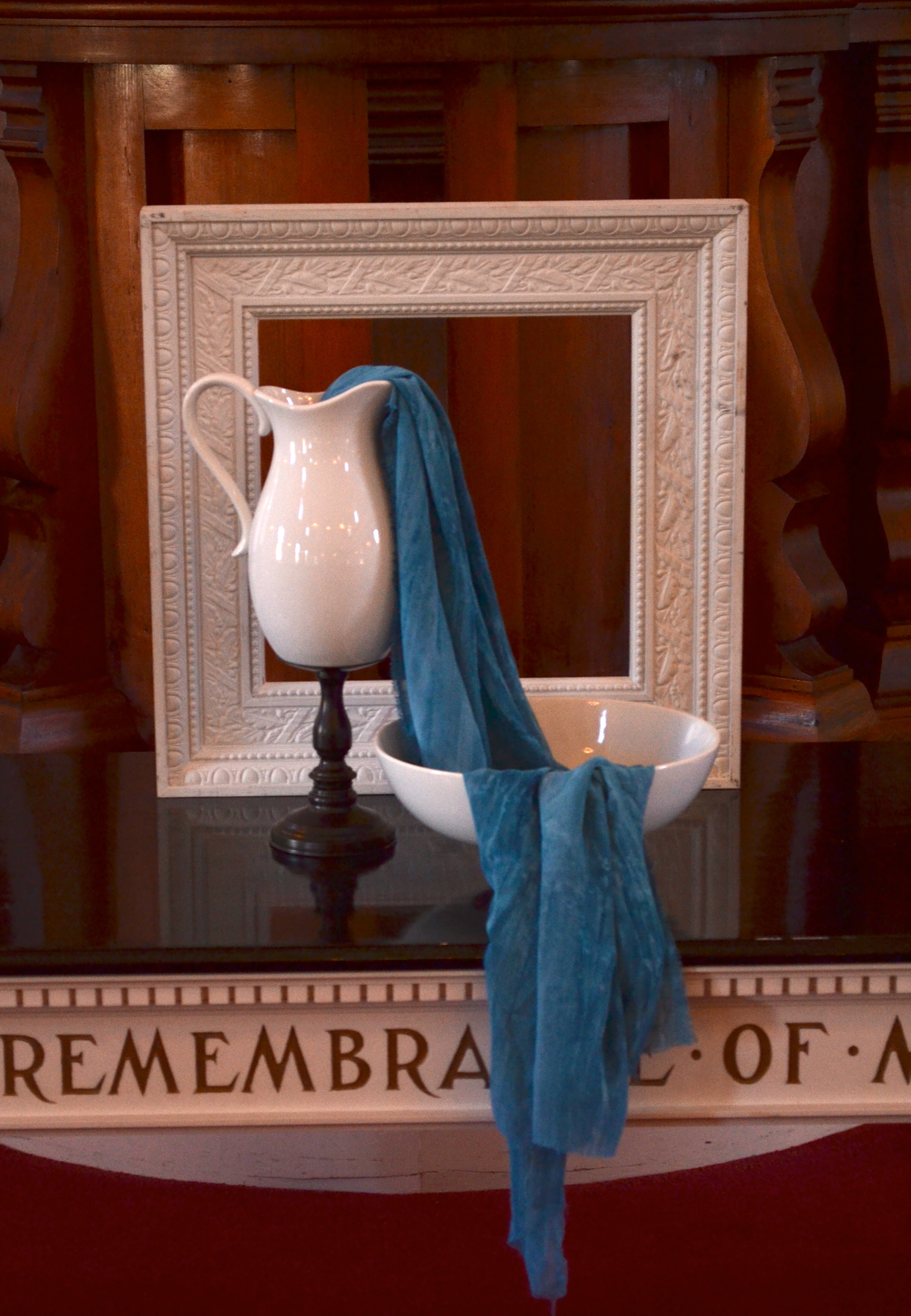Are you interested in incorporating more creative and visually engaging elements into worship? Here are some tips to think about before you do.
1. Tell the story.
Our faith is filled with stories–stories of wars and friendships, of healing and miracles and deaths and resurrection. They are powerful stories, stories that have been passed from generation to generations until they’ve come to us. We are inheritors of these stories, precious and vital. The temptation when incorporating visual worship into your worship space is to get caught up in the grandeur of it all. It’s easy to make it about which fabric is better–the shiny or the plain. Or which candles are tall enough. Or what to do with the cross. The truth is we’ve been called to tell the story. The cross on our altars is a chapter of that story. But there are lots of other parts that are just as invaluable to the story of our faith. If you find yourself stumped while creating an altarscape, take a moment, step back, and ask, “how is this telling the story?”
2. Move the cross.
When I speak to churches or lead workshops, this is one topic that is fraught with anxiety. “I want to create altarscapes…I’ve got lots of ideas,” someone begins, “But the altar guild [or whoever] insists we not move the cross.” What I’m about to tell you isn’t for the faint of heart, so prepare yourself. Move the cross. Here’s the thing: As I mentioned earlier, we are inheritors and stewards of the story of our faith. And the cross is one of the beautiful, tragic chapters that makes up that story. But it’s not the whole story. The gospels don’t end with Good Friday. They tells us of what happens the next day, three days later, and on and on. This might seem a little strong, but I believe: If the cross is so important that it can’t be moved, I have to wonder what it is we are worshiping: the one crucified on it or the symbol itself. And if it’s the latter, we have a word for that: idolatry.
3. Tell one story at a time.
While we’re on this theme of the stories of our faith, it’s important to note that the most effective visual worship designs center on a single story at a time. If it’s a Communion Sunday, let the story you tell be of bread and wine. (That’s why it’s ok to move the cross–make it your mantra: one story at a time).
4. Less is more. Unless it isn’t.
Along the lines of telling one story at a time, a central guideline is this: Less is more. Unless it isn’t (more on that second part in a bit). When I was a wee visual worship designer, I was so excited to create an altarscape for a baptism. Here’s what I came up with.
Clearly, I wanted to prove that I had blue fabric. Lots of it. Later, after I moved to Westfield, I came up with this version:
My downfall early on was wanting to use everything in my bag of tricks: all the fabrics, all the pottery, all of this, that, or the other. When really what was most meaningful all along was simple, bold visuals. The Baptismal altarscape had so much going on it became difficult to discern what was happening. The second simply framed (literally!) the beauty of the sacrament. Less is more.
Until it isn’t. It’s important to take the space housing your design into consideration. Is it a big room? What shape is it? Is there a balcony? How will your altarscape look to someone on the back row or off to the side? A simple design doesn’t necessarily mean small in scope. For a design to be visually engaging, it should physically engage the space.
While these tips are more theoretical than practical, I find them to be the foundation of a creative and engaging visual worship. Next up: Altarscapes 201: Practical Tips!






Facebook pages: Alexander Hunter
Windsor Congregational Church
All 4 of your points in this post are so right! Spot on.